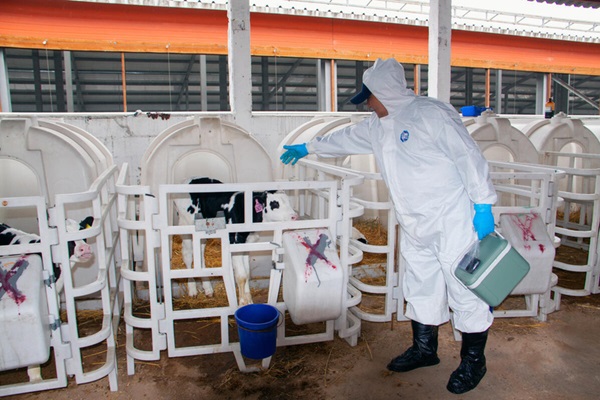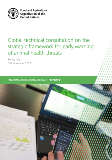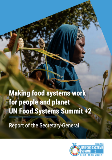
Zoonoses
Zoonotic diseases, or zoonoses, are diseases shared between animals – including livestock, wildlife, and pets – and people. They can pose serious risks to both animal and human health and may have far-reaching impacts on economies and livelihoods. Zoonotic diseases are commonly spread at the human-animal-environment interface – where people and animals interact with each other in their shared environment. Zoonotic diseases can be foodborne, waterborne, or vector-borne, or transmitted through direct contact with animals, or indirectly by fomites or environmental contamination. Examples include, Rift Valley Fever, MERS-CoV, and some strains of Avian Influenza.
One Health approach
Health issues at the human-animal-environment interface cannot be effectively addressed by one sector alone. Collaboration across all sectors and disciplines responsible for health is required to address zoonotic diseases and other shared health threats at the human-animal-environment interface. This approach to collaboration is referred to as One Health.
⦿ A zoonosis is any disease or infection that is naturally transmissible from vertebrate animals to humans.
⦿ 60 percent of all human infectious diseases are zoonotic in origin and some 75 percent jump species.
⦿ There are over 200 known types of zoonoses.
Highlights

Highlights
Global Early Warning System: Safeguarding against future pandemics
02/10/2024
As the world grapples with the rising threat of zoonotic and emerging diseases, the Global Early Warning System (GLEWS+) stands as a critical defense...

Highlights
RENOFARM Youth Poster Challenge
30/09/2024
FAO have teamed up with Huazhong Agricultural University to launch the RENOFARM Youth Scientific Poster Challenge during the Second Animal Disease...

Highlights
Reducing human rabies cases in Bali through effective dog vaccination campaigns
18/09/2024
Human cases of rabies dropped to a fraction of their peak levels, demonstrating the effectiveness of the One Health approach.

Highlights
One Health webinar examines problems of zoonoses and offers solutions to the region
05/09/2024
Consultation reflecting on the experience of the Ministry of Health of Kazakhstan and the WHO subregional central office in Asian countries as part...

Highlights
Online consultation on guidelines for sustainable tick control and acaricide resistance management in livestock
03/09/2024
Your opinion counts! By taking part in this consultation, you can provide suggestions and make improvements to these updated guidelines.

Fighting the scourge of tsetse flies and trypanosomosis in Africa
28/08/2024
Tsetse flies and the diseases they transmit, collectively known as trypanosomoses, pose a significant threat to both human and animal health in sub-Saharan...
Publications

Global technical consultation on the strategic framework for early warning of animal health threats
05/2024
To support countries in the prevention and management of losses caused by animal diseases is working to develop a strategic framework for early warning...

Global strategy for the prevention and control of high pathogenic avian influenza (2024–2033)
05/2024
This four-pager document provides a high-level strategic direction to support and inform the development or revision of national and regional action...

Making food systems work for people and planet UN Food Systems Summit +2 - Report of the Secretary-General
07/2023
The UN Food Systems Summit of 2021 (UNFSS) projected a vision, in which the transformation of food systems through profound shifts across production,...
